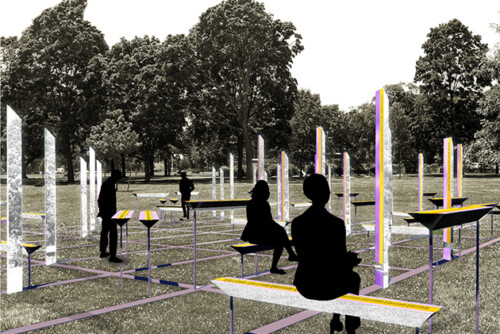D was 17 years old when she was kicked out of her mother’s house. D’s mother didn’t accept D’s sexuality. While she was never able to state honestly that it was D’s sexuality or gender expression that was an issue, she constantly tried to change who D was. She fought with D about who her friends were and would never let her bring friends home. She harassed D about how she dressed, told her to dress “more like a girl,” and became physically violent during their arguments. It wasn’t long before D was forced to leave her home with none of her belongings—no clothes, no ID. In the beginning she managed to bounce from couch to couch, staying with various friends. But due to the instability she wasn’t able to continue with high school. When the couches ultimately dried up, D found her way to a youth homeless shelter. There she remained for the 30 days allocated for crisis shelter beds. When her 30 days were up, she made her way to a service agency where she met with advocates who tried to get her into foster care. But the system was unresponsive. When the city investigated why D, still a child, was homeless, they concluded that she came from a troubled family but one that could be repaired through counseling. Little effort was made to reunite this family and D’s mother was not interested in addressing her underlying homophobia. The issue was masked as a behavior problem on D’s part. In the end, D was expected to return home to her mother. D tried to return home but was soon forced out by her mother’s abuse. By this time D was 18 years old: too old for foster care services. Without a high school diploma, identification, and a source of income, D’s options were limited. Once D found her way back to a youth homeless shelter, she began the brutal journey through New York City’s various systems. 1
In New York City, estimates of homeless and street-involved youth range between 20,000 and 30,000. Nationwide studies indicate that 20 to 40 percent of youth living on the streets identify as lesbian, gay, bisexual, transgender, queer, or questioning (LGBTQQ), not including those whose behavior and identity don’t fit any officially recognized category. 2 Marginalized and vulnerable, homeless LGBTQQ youth are overwhelmingly low-income youth of color who have been kicked out by parents, or have fled abusive homes because of their gender or sexual nonconformity.
In general terms, LGBTQQ young people become homeless as a result of the same social inequities that face all poor people, but especially poor people of color. They are affected by unemployment and underemployment, cuts in public benefits, and rising housing costs. They leave high school before graduating, and face regular police harassment. They are overrepresented in the foster care, juvenile justice, and shelter systems. They struggle with higher than average levels of substance abuse, mental health issues, and violence. They are more likely to turn to sex work to survive. And LGBTQQ youth are often more severely affected by such difficulties than most other young people. Home, school, the streets, and the social service system can all be dangerous places of bullying and fear, as well as everyday discrimination. 3
What are LGBTQQ communities doing to help these young people? Progress over the past decades has encouraged more members of our communities to come out, often at younger and younger ages. This means that the LGBTQQ homeless population is becoming younger too, on average. Despite overall progress in LGBTQQ rights, these homeless youth often face anger, violence, and confusion at home—and discrimination, harassment, and more violence when they leave. The institutions designed to help homeless young people, the foster care and shelter systems, do not do a good job of ensuring the safety and support of LGBTQQ youth. Many choose to live on the streets rather than face the violence and harassment they confront in homeless shelters and foster care placements. On the streets, they can create their own networks of friends and families, and learn from each other how to navigate the various agencies and service programs that they need to survive.
The mainstream LGBTQQ movement organizations generally encourage young people to come out, usually with no real comprehension of the hostile forces they are likely to confront, and without strong material commitments to addressing their needs. The national LGBTQQ organizations working on youth issues emphasize issues such as education and sexual health, but largely neglect the violence and isolation that young people face in homeless shelters and foster care agencies, or the challenges they face when confronting the police and negotiating with johns on the street. 4
- D’s identity is confidential. D is a young person that both authors worked with in collaboration.[↑]
- M.C. Clatts, D.J Hillman, A. Atillasoy, and W.R. Davis, Lives in the Balance: A Profile of Homeless Youth in New York City (New York: National Development and Research Institutes, 1996).[↑]
- Covenant House Institute, Youth in Crisis: Characteristics of Homeless Youth Served by Covenant House New York (PDF). (New York: Covenant House Institute, 2009). Lambda Legal Defense and Education Fund, Youth At the Margins: A Report on the Unmet Needs of Lesbian, Gay, Bisexual and Transgender Adolescents in Foster Care (PDF). (New York: Lambda Legal Defense and Education Fund, 2001).[↑]
- Most national LGBTQQ organizations have failed to address systemic class and racial inequalities as well as LGBTQQ youth homelessness. However, NGLTF recently released a national report on LGBTQQ youth homelessness. National Gay and Lesbian Task Force, Lesbian, gay, bisexual and transgender youth: An epidemic of homelessness (New York: National Gay and Lesbian Task Force, 2007). Also, Lambda Legal has an Out of Home Youth Project that addresses issues facing LGBTQQ youth in the foster care and juvenile justice system.[↑]



